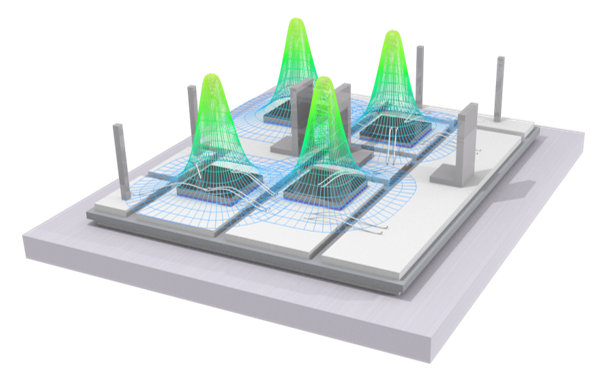UA Researchers Receive NSF Grant to Develop Power Module Layout Synthesis Tool
Over the last four years, researchers at the University of have developed PowerSynth, a novel multi-objective layout synthesis tool. PowerSynth was developed in conjunction with the NSF Center on GRid-connected Advanced Power Electronic Systems, an industry/university cooperative research center originally formed in 2009.
This fall the research team, led by Alan Mantooth, received a three-year $360,000 grant to research and develop new mathematical models and several new features for the tool to analyze mechanical and thermal reliability.
PowerSynth is focused on developing a layout synthesis tool for multi-chip power modules, or MCPMs for short. MCPMs offer increased reliability and decreased cost, complexity and size of power electronic systems by integrating components, controls and protection circuitry into one compact package. As a result of these increased efficiencies, use of MCPMs will continue to increase over time. Right now, however, MCPMs are most often designed using an iterative, largely manual process that often requires a significant amount of engineering time and a large investment in building prototypes for testing, all of which add to the cost of the module.
PowerSynth aims to automate the design process, beginning from circuit schematics, utilizing fast physical models, and a multi-objective optimization approach. These methods allow the optimizer to evaluate many different solutions to chip placement and routing very quickly, allowing the engineer to get much closer to a viable solution in minutes or hours rather than days or weeks!
U of A researchers will be working in concert with engineers from Ansys, a software simulation company headquartered in Canonsburg, Pennsylvania. Ansys has worked to develop engineering simulation tools for more than 45 years.
"We are extremely pleased to have the opportunity to partner with a world-leading EDA company such as Ansys to advance our design tools", said Mantooth. "This project gives us a chance to coordinate our research efforts with an eye toward eventual commercialization for the entire industry. That will ensure maximal impact."
This grant has been awarded under National Science Foundation's Grant Opportunities for Academic Liaison with Industry program, developed to improve the nation's capacity for intellectual and economic growth by increasing the number of industrial partnerships and collaborations with universities.
About the University of Arkansas: The University of Arkansas provides an internationally competitive education for undergraduate and graduate students in more than 200 academic programs. The university contributes new knowledge, economic development, basic and applied research, and creative activity while also providing service to academic and professional disciplines. The Carnegie Foundation classifies the University of Arkansas among only 2 percent of universities in America that have the highest level of research activity. U.S. News & World Report ranks the University of Arkansas among its top American public research universities. Founded in 1871, the University of Arkansas comprises 10 colleges and schools and maintains a low student-to-faculty ratio that promotes personal attention and close mentoring.
Contacts
Kimberly Gillow, program manager
Electrical Engineering
479-575-2163, kdaling@uark.edu
